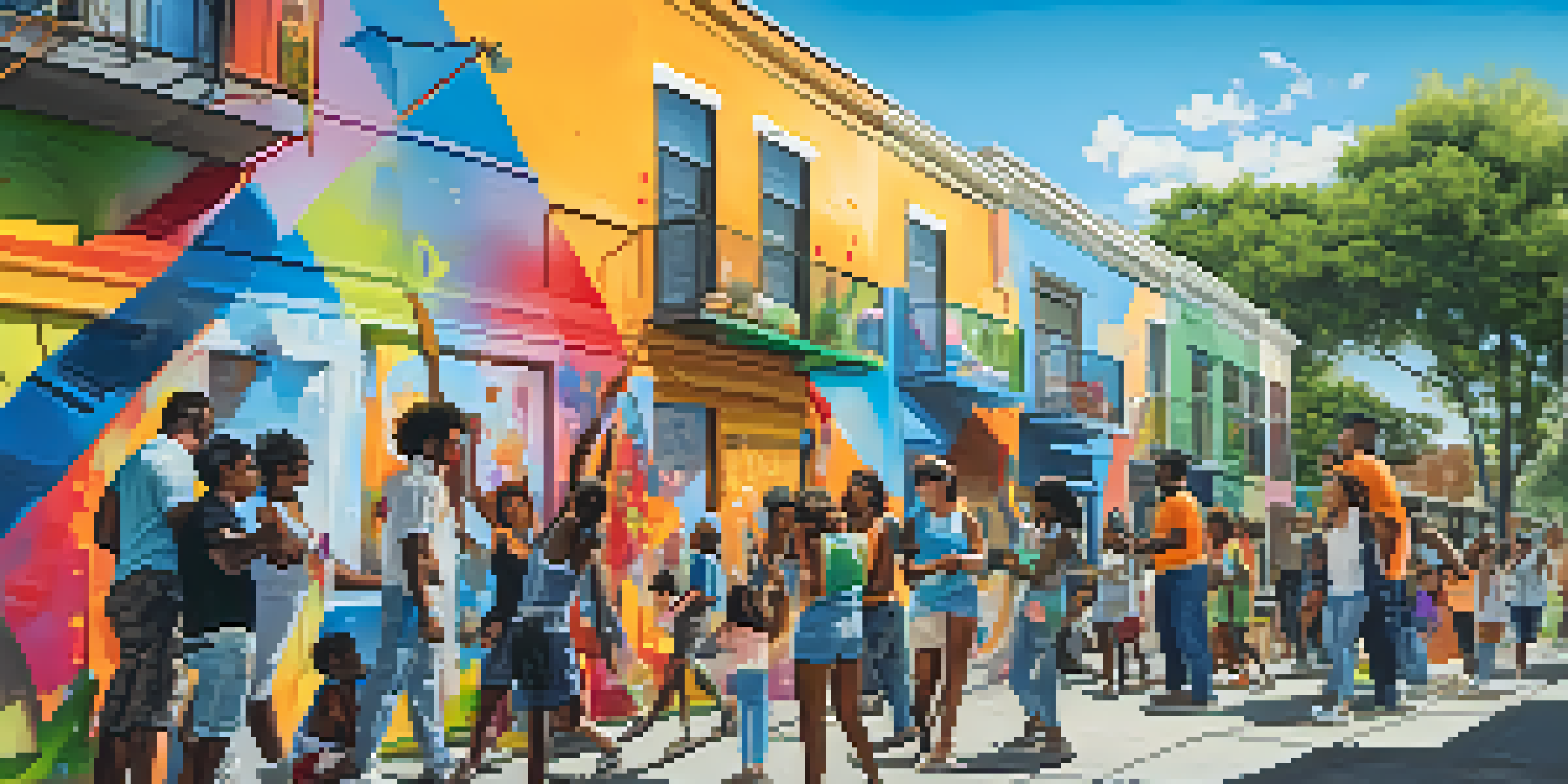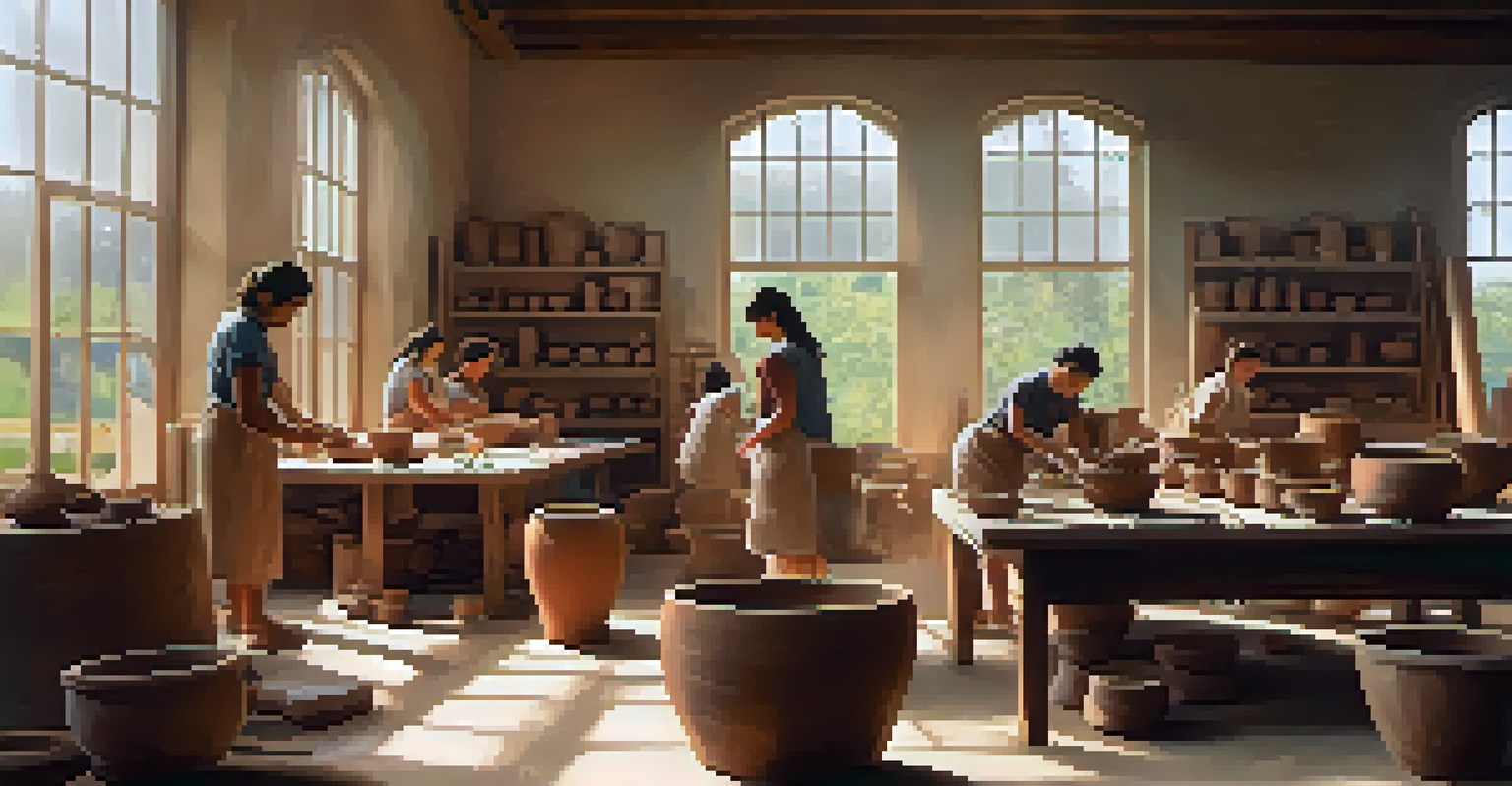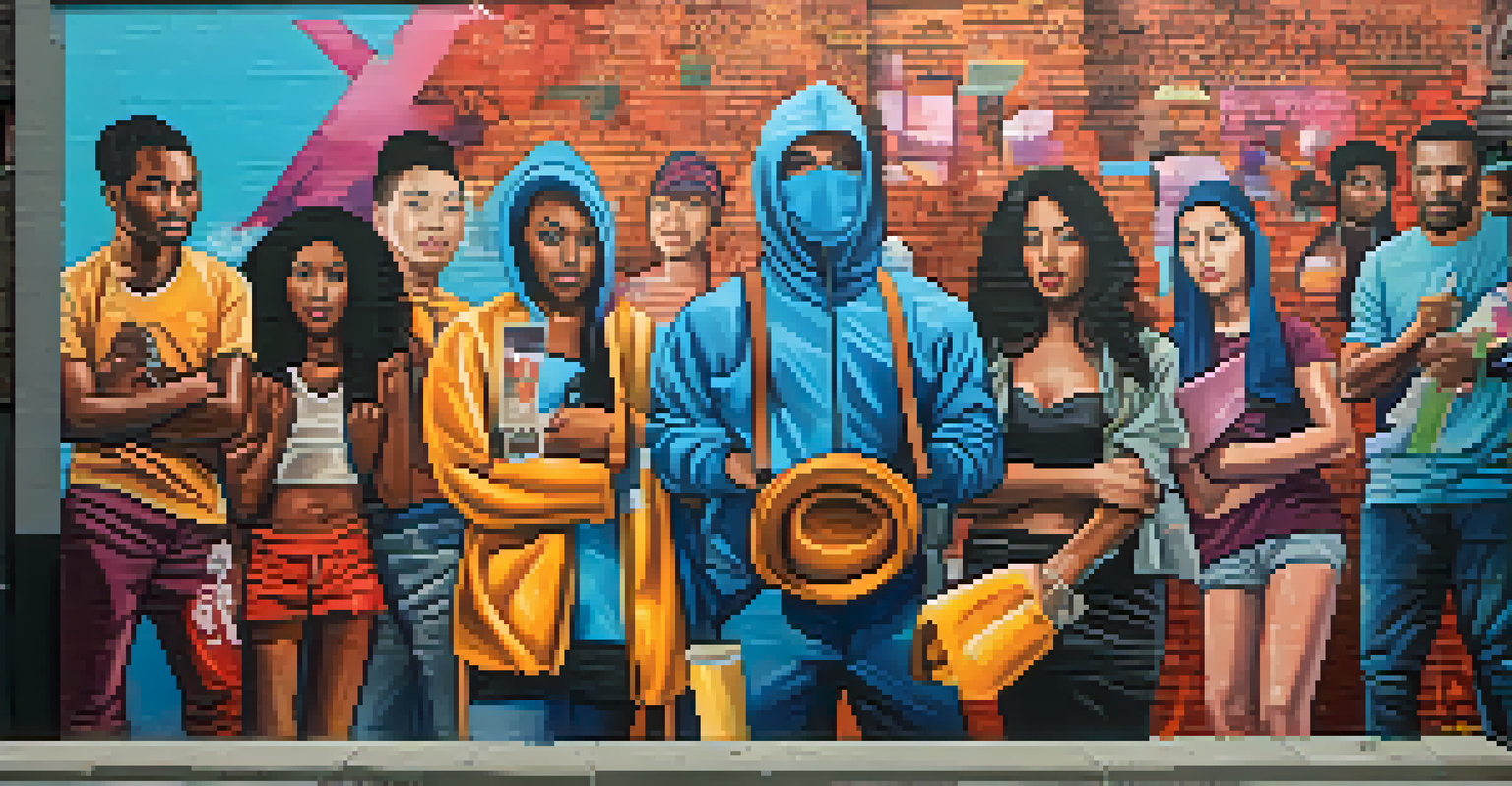Art for Change: Mobilizing Communities Through Creativity

Understanding the Role of Art in Social Movements
Art has always been a powerful tool for expression, but its role in social movements is often underestimated. From protest songs to mural paintings, creative expressions can communicate complex ideas and emotions that resonate deeply with communities. It's not just about aesthetics; art can inspire action and unite people around a common cause.
Art is not a mirror to reflect the world, but a hammer with which to shape it.
When communities face injustice, art becomes a voice for the voiceless. It tells stories that might otherwise remain unheard, capturing the struggles and aspirations of individuals. For instance, the murals in neighborhoods often reflect local histories and challenges, serving as a reminder of the community's resilience.
Ultimately, art taps into the human experience, fostering empathy and understanding. This shared emotional connection can ignite passion and motivate individuals to get involved, proving that creativity is not just about beauty, but also about making a difference.
Art as a Catalyst for Community Engagement
Engaging communities through art can create a sense of belonging and ownership. When people collaborate on creative projects, they develop stronger bonds and a shared identity. This communal effort not only beautifies spaces but also encourages dialogue and cooperation among diverse groups.

For example, community art projects like public murals or sculptures can transform neglected areas into vibrant hubs of activity. This transformation often leads to increased foot traffic and local interest, promoting economic growth and revitalization. Individuals who participate in these projects often report feeling more connected to their neighborhood.
Art Amplifies Social Movements
Art serves as a powerful medium for expression, uniting communities and giving voice to the voiceless in the face of injustice.
Moreover, art workshops and classes can empower individuals by teaching valuable skills. These experiences help participants discover their own voices and potential, fostering a culture of creativity that can lead to further community initiatives and changes.
Case Study: The Power of Street Art in Activism
Street art has emerged as a prominent form of expression in many social movements around the globe. This art form often embodies the spirit of resistance, making bold statements in public spaces. Artists like Banksy have shown how street art can challenge societal norms and provoke thought, encouraging viewers to question the status quo.
Creativity takes courage.
In various cities, street art has played a significant role in addressing social issues such as racism, inequality, and climate change. Murals depicting the struggles of marginalized communities serve as a visual rallying cry, inviting passersby to engage with the message. This accessibility makes street art a unique vehicle for activism.
Moreover, the ephemeral nature of street art adds to its power; it can be quickly created and just as quickly erased, reflecting the urgency of the messages conveyed. This fleeting quality often drives home the point that change is necessary and must happen now.
Creative Workshops: Fostering Skill Development and Unity
Creative workshops serve as a vital platform for community engagement and personal growth. These workshops can range from painting and pottery to writing and theater, offering diverse opportunities for self-expression. Participants not only learn new skills but also build relationships with others, fostering a sense of unity.
For instance, a community center might host a mural workshop where residents collaborate to design and paint a local wall. This process not only beautifies the neighborhood but also allows individuals to express their thoughts on important issues, creating a shared narrative. Such projects can leave lasting impacts on both participants and the community.
Community Engagement Through Art
Collaborative art projects foster a sense of belonging and connection among community members, enhancing local identity and engagement.
Additionally, these workshops often attract people from various backgrounds, promoting inclusivity and understanding. As participants share their perspectives, they learn to appreciate different cultures and experiences, ultimately strengthening community ties.
Digital Art: Expanding Reach and Engagement
In today's digital age, art has transcended physical boundaries, allowing communities to engage in new ways. Social media platforms provide a stage for artists to showcase their work and connect with a global audience. This digital landscape can amplify messages of social change, reaching people far beyond local communities.
For example, campaigns that utilize digital art to highlight social issues can quickly gather support and mobilize action. Hashtags and viral posts can draw attention to causes, encouraging individuals to get involved or donate. This shift in how art is shared and consumed reflects the evolving nature of community activism.
Moreover, digital art can be interactive, inviting viewers to participate in the creative process. Online platforms allow for collaborative projects where individuals can contribute their ideas and talents, fostering a sense of community even in a virtual environment.
The Healing Power of Art in Communities
Art can also serve as a powerful tool for healing, especially in communities affected by trauma. Creative expression provides an outlet for individuals to process their experiences and emotions in a safe space. This therapeutic aspect of art can foster resilience and promote mental well-being.
Community art therapy initiatives often involve creating art as a group, allowing participants to share their stories. This collective experience can break down barriers, encouraging empathy and support among individuals who may be struggling. Through art, people find solace and connection in their shared experiences.
Digital Art Expands Activism Reach
In the digital age, art can transcend physical boundaries, mobilizing global support for social issues through social media platforms.
Furthermore, the act of creating something beautiful can instill a sense of hope and agency. It empowers individuals to reclaim their narratives and envision a brighter future, ultimately transforming pain into purpose.
Sustaining Community Art Initiatives for Long-term Impact
To truly mobilize communities through creativity, it's essential to sustain art initiatives over time. This requires securing funding, resources, and community support to ensure that projects can continue to thrive. Collaboration with local businesses, schools, and organizations can help create a network of support for ongoing artistic endeavors.
Additionally, documenting and sharing the impact of these initiatives can attract further interest and investment. By showcasing success stories, communities can inspire others to participate and contribute to the cause. This visibility helps to create a sense of momentum, encouraging continuous engagement.

Ultimately, the goal is to embed art into the fabric of community life. When art becomes a regular part of community activities, it not only enriches lives but also fosters a culture of creativity and resilience that can drive social change for years to come.